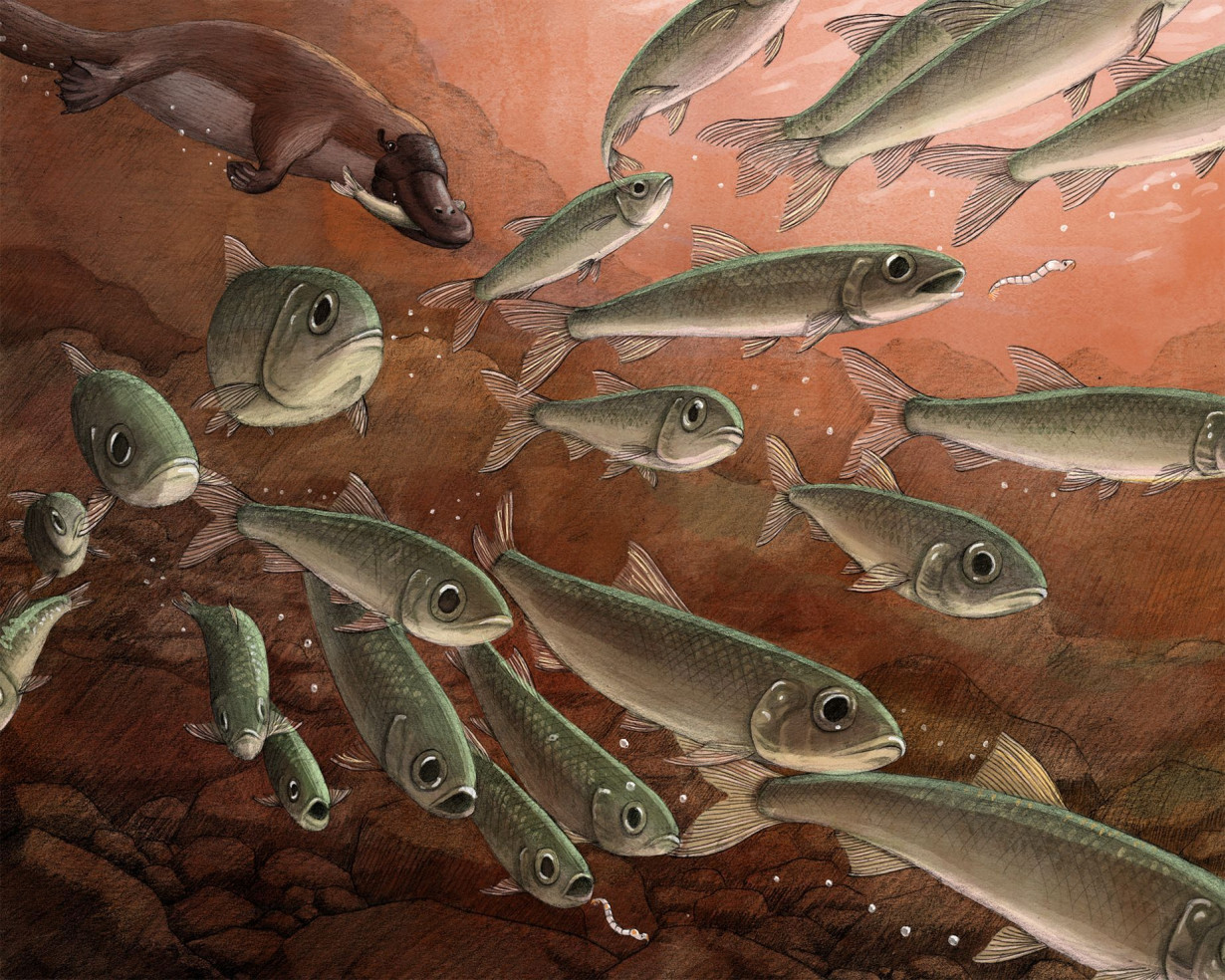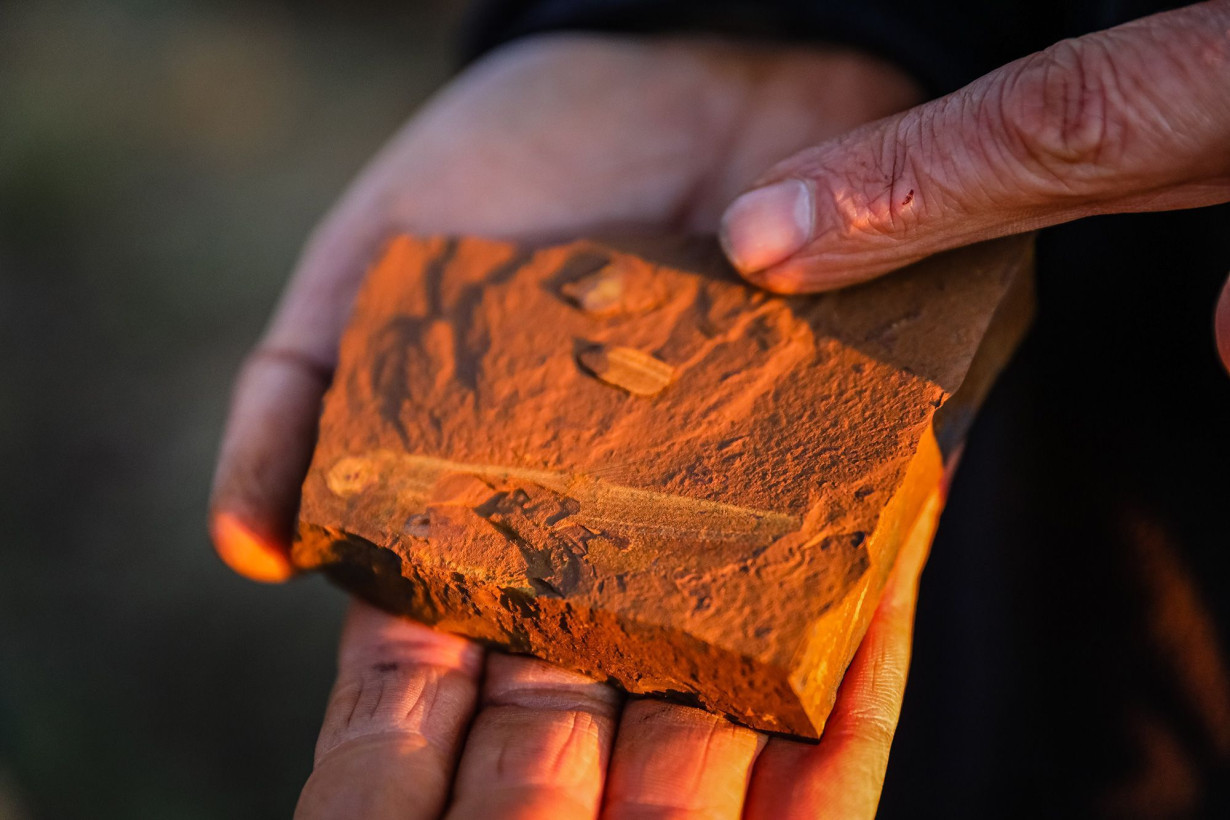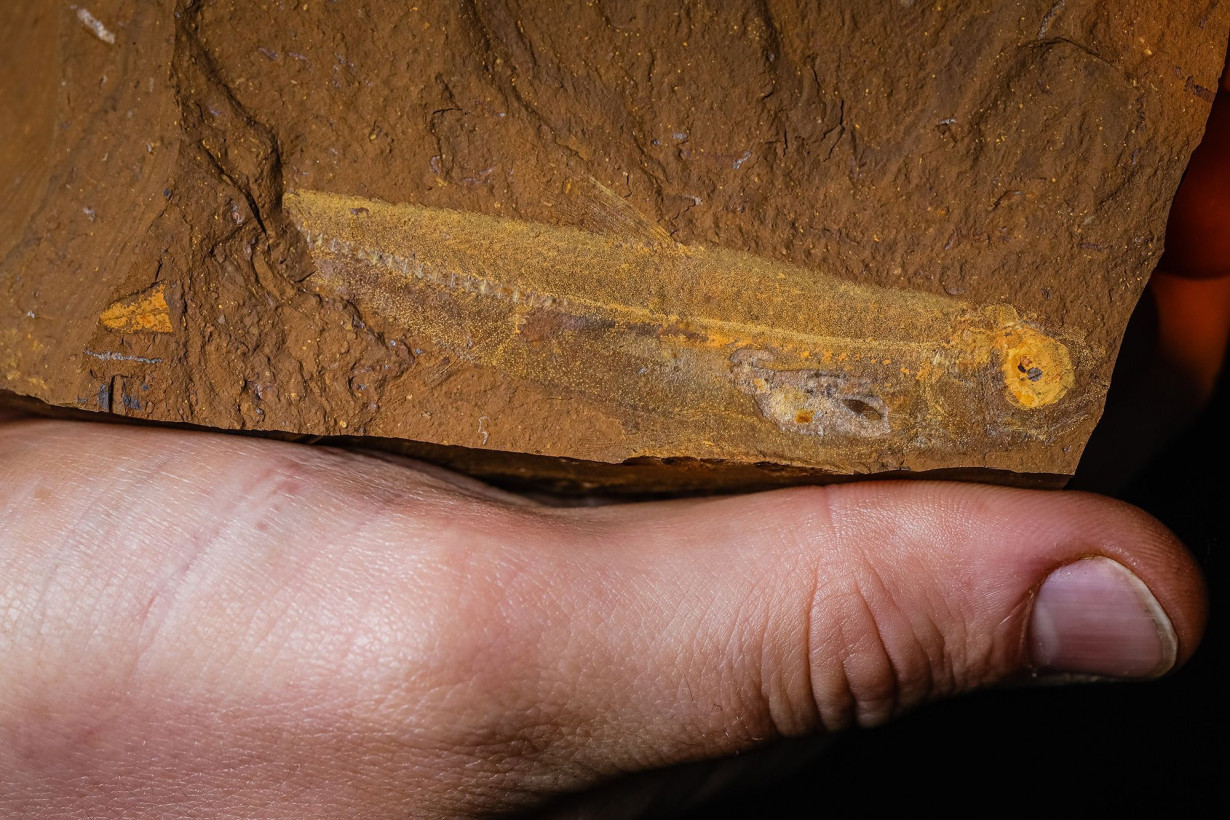(CNN) — Paleontologists have discovered a newly identified fish species in Australia so well-preserved that they could determine its last meal — dating back up to 16 million years to the Miocene Epoch.
Researchers unearthed the fossilized freshwater fish, named Ferruaspis brocksi, at the McGraths Flat site in central New South Wales, according to a study published March 17 in the Journal of Vertebrate Paleontology.
The study team excavated multiple fossils containing F. brocksi, each entombed in goethite, an iron-rich mineral that maintained the fish in extraordinary detail. This rare fossilization process allowed researchers to examine the species’ structural features, including its soft tissue, stomach and coloration patterns.

“Every time I have a detailed look at a fossil from McGraths Flat, I am amazed by its detailed preservation,” study coauthor Dr. Michael Frese, associate professor and virologist at the University of Canberra, said via email. “It’s very surprising, (and) it’s extremely rare to be able to tell the colour of a fossil fish like this.”
Beyond identifying a newfound species, researchers uncovered the first detailed evidence of Osmeriformes, a group that includes modern-day graylings and smelts, in Australia.
Until now, scientists could only speculate when smelts first arrived on the continent due to a lack of fossil evidence, but this new finding offers crucial insights into the region’s ancient ecosystem, Frese said.
Tracing a prehistoric food web

Using high-powered microscopes, paleontologists analyzed the stomach contents and intestinal tract of F. brocksi and found the fish primarily fed on various types of phantom midge larvae — an almost transparent insect larvae — along with insect wings and even a small bivalve, or a mollusk with hinged shells.
“Knowing their diet helps us start to paint a picture of food chains and food webs in the original environments,” said Dr. Anthony Martin, a professor of practice in the department of environmental sciences at Emory University in Atlanta, who was not involved in the study.
One specimen of fish had a freshwater mussel attached to its tail fin. The finding is rare because the lake sediments where F. brocksi were found wouldn’t have supported an environment for the bivalve to reach sexual maturity and produce glochidia — the larval, parasitic stage of some freshwater mussels, Frese said. He added that it’s likely the parasites infected the fish in a nearby river, suggesting a connection between the fossil site and a neighboring waterway.
The stomach contents not only helped paleontologists identify what the fish were eating but also when they were feeding.
“Many extant species of Chaoborus (phantom midge larvae) do not occur in lakes with fishes, and those that do co-exist with fishes often conduct a diurnal migration to avoid predatory fishes during the daytime,” Frese said.
“As most Chaoborus larvae spent most of the day in the sediment, hiding from pelagic predators, F. brocksi would likely have preyed on Chaoborus at night.”
A glimpse into history
One of the most surprising discoveries was the presence of melanophores or pigmented cells, offering insight into the fish’s coloration.
The fossils revealed F. brocksi had a slender body, similar to modern-day smelts. The fish also presented evidence of countershading, in which the animal was darker on the top and lighter on its stomach, with two stripes running along the length of its body, according to the study.
Frese noted that this coloration pattern may indicate a shoaling behavior, in which fish gather in loose social groups. The countershading also likely helped the species evade predators from above, Martin added.
While central New South Wales is now characterized by plains and plateaus, during the Miocene, the region was surrounded by lush rainforests, according to the study. The discovery of F. brocksi west of the Great Dividing Range suggests that, unlike most surviving Osmeriformes, this species may have spent its entire life in freshwater, according to the study.
“While this study is focused on one species of fish,” Frese said, “it is part of a broader ecosystem that we are piecing together by excavating fossils from the site.”
The-CNN-Wire
™ & © 2025 Cable News Network, Inc., a Warner Bros. Discovery Company. All rights reserved.

 Trump has begun another trade war. Here's a timeline of how we got here
Trump has begun another trade war. Here's a timeline of how we got here
 Canada's leader laments lost friendship with US in town that sheltered stranded Americans after 9/11
Canada's leader laments lost friendship with US in town that sheltered stranded Americans after 9/11
 Chinese EV giant BYD's fourth-quarter profit leaps 73%
Chinese EV giant BYD's fourth-quarter profit leaps 73%
 You're an American in another land? Prepare to talk about the why and how of Trump 2.0
You're an American in another land? Prepare to talk about the why and how of Trump 2.0
 Chalk talk: Star power, top teams and No. 5 seeds headline the women's March Madness Sweet 16
Chalk talk: Star power, top teams and No. 5 seeds headline the women's March Madness Sweet 16
 Purdue returns to Sweet 16 with 76-62 win over McNeese in March Madness
Purdue returns to Sweet 16 with 76-62 win over McNeese in March Madness








